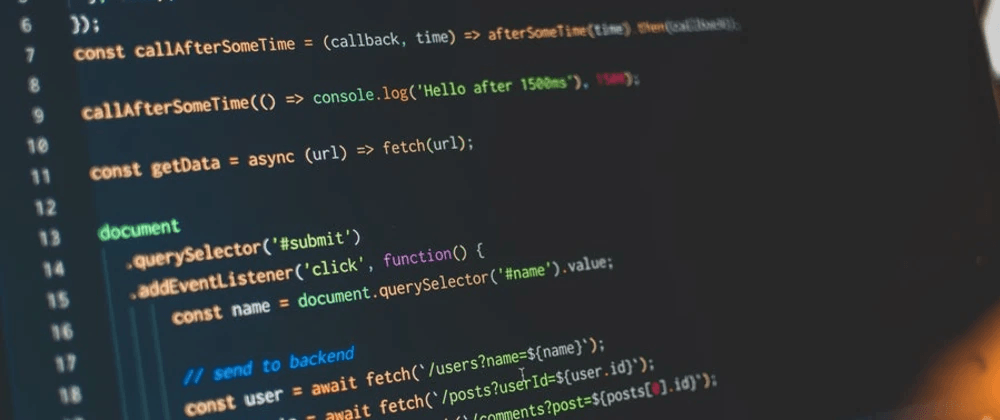Javascrip 正则表达式速查表

正则表达式 「regex」 ,用于在一个字符串中匹配部分内容。下面是我整理出来的创建和使用正则表达式速查表。
测试正则表达式
- 使用
.test()方法let testString = "My test string"; // 声明字符串变量 let testRegex = /string/; //声明正则表达式变量,这种形式代表是 regex testRegex.test(testString); //由于含 "string" ,返回 true
测试多模式中任意一个存在
- 使用 或 操作符 (|)
const regex = /yes|no|maybe/;忽略大小写
- 使用
i开关标志表示大小写不敏感
const caseInsensitiveRegex = /ignore case/i; //注意最后的 i
const testString = 'We use the i flag to iGnOrE CasE';
caseInsensitiveRegex.test(testString); // 由于字符串中的 "iGnOrE CasE" 在忽略大小写的情况下与 “ignore case” 相同,故命中返回 true
从字符串中抽出第一个匹配项
- 使用
.match()函数
const match = "Hello World!".match(/hello/i); // 常量 match = "Hello"从字符串中抽出所有匹配项到一个数组中
- 使用
g开关标志
const testString = "Repeat repeat rePeAT";
const regexWithAllMatches = /Repeat/gi; //最后的 g 表示全部。
testString.match(regexWithAllMatches); // 返回 ["Repeat", "repeat", "rePeAT"]
匹配任意的一个字符
- 使用通配符
.表示一个字符的占位,可匹配任何字符
// 匹配 "cat", "BAT", "fAT", "mat" -所有都是一个字符后跟 "at"
const regexWithWildcard = /.at/gi; //全部,忽略大小写
const testString = "cat BAT cupcake fAT mat dog";
const allMatchingWords = testString.match(regexWithWildcard); // ["cat", "BAT", "fAT", "mat"]
一个字符位置上可能出现字符集合的匹配
- 使用字符类表达式,它可以定义一个字符集合匹配字符串中指定的字符位
- 将字符集合放到
[]中// 匹配 "cat" "fat" 和 "mat" ,但是不匹配 "bat" const regexWithCharClass = /[cfm]at/g; //[]中的任意一个字符出现即匹配 const testString = "cat fat bat mat"; const allMatchingWords = testString.match(regexWithCharClass); // ["cat", "fat", "mat"]
匹配字母表中的字母
- 使用字符集连续范围表示符
-,如[a-z]
const regexWithCharRange = /[a-e]at/;
const catString = "cat";
const batString = "bat";
const fatString = "fat";
regexWithCharRange.test(catString); // true
regexWithCharRange.test(batString); // true
regexWithCharRange.test(fatString); // false
匹配字母和数字
- 连字符
-也可用于数字
const regexWithLetterAndNumberRange = /[a-z0-9]/ig;
const testString = "Emma19382";
testString.match(regexWithLetterAndNumberRange) // 全匹配,返回原始串 "Emma19382"
匹配一个未知字符(排除已知字符)
- 匹配不想要的字符集合,可以使用 否定表示符 表示排除的字符集合
- 使用脱字符
^表示排除字符集
const allCharsNotVowels = /[^aeiou]/gi;
const allCharsNotVowelsOrNumbers = /[^aeiou0-9]/gi;匹配字符出现一次或多次
- 字符后使用
+符号
const oneOrMoreAsRegex = /a+/gi;
const oneOrMoreSsRegex = /s+/gi;
const cityInFlorida = "Tallahassee";
cityInFlorida.match(oneOrMoreAsRegex); // ['a', 'a', 'a'];
cityInFlorida.match(oneOrMoreSsRegex); // ['ss'];
匹配字符出现0次或多次
- 使用星号
*
const zeroOrMoreOsRegex = /hi*/gi;
const normalHi = "hi";
const happyHi = "hiiiiii";
const twoHis = "hiihii";
const bye = "bye";
normalHi.match(zeroOrMoreOsRegex); // ["hi"]
happyHi.match(zeroOrMoreOsRegex); // ["hiiiiii"]
twoHis.match(zeroOrMoreOsRegex); // ["hii", "hii"]
bye.match(zeroOrMoreOsRegex); // null
惰性匹配
- 只匹配尽量小的部分出来
- 正则表达式中的
*表示零次或多次,默认是贪心算法(匹配尽量多的字符、尽量大的部分出来) - 其后使用
?指示进行 惰性匹配 (匹配尽量少的字符、尽量小的部分出来)
const testString = "catastrophe";
const greedyRexex = /c[a-z]*t/gi;
const lazyRegex = /c[a-z]*?t/gi;
testString.match(greedyRexex); // ["catast"],其中 [a-z]* 匹配了 "atas"
testString.match(lazyRegex); // ["cat"],其中 [a-z]*? 仅匹配了 "a"
匹配字符串行首
- 匹配计算从字符串行首开始,使用脱字符
^,这种情况,脱字符^不在字符集表示符[]里,与排除字符集语法 [^abc] 区分。
const emmaAtFrontOfString = "Emma likes cats a lot.";
const emmaNotAtFrontOfString = "The cats Emma likes are fluffy.";
const startingStringRegex = /^Emma/; //匹配行首是 "Emma"
startingStringRegex.test(emmaAtFrontOfString); // true
startingStringRegex.test(emmaNotAtFrontOfString); // false
匹配字符串行尾
- 匹配计算检查在字符串行尾,使用美元符
$。
const emmaAtBackOfString = "The cats do not like Emma";
const emmaNotAtBackOfString = "Emma loves the cats";
const startingStringRegex = /Emma$/; //匹配以 "Emma" 结尾的字符串
startingStringRegex.test(emmaAtBackOfString); // true
startingStringRegex.test(emmaNotAtBackOfString); // false
匹配所有的字母和数字
- 使用 \word 的简写
\w
const longHand = /[A-Za-z0-9_]+/; //代表所有字母和数字的正则的长写法
const shortHand = /\w+/; //代表所有字母和数字的正则的短写法
const numbers = "42";
const myFavoriteColor = "magenta";
longHand.test(numbers); // true
shortHand.test(numbers); // true
longHand.test(myFavoriteColor); // true
shortHand.test(myFavoriteColor); // true
//字母和数字都匹配匹配字母和数字之外的任何字符(排除字母和数字)
- 可使用 字母和数字 短写的反面,将
\w中的 w 改成大写\W,表示\w的反,即排除字母和数字
const noAlphaNumericCharRegex = /\W/gi;
const weirdCharacters = "!_$!!";
const alphaNumericCharacters = "ab283AD";
noAlphaNumericCharRegex.test(weirdCharacters); // true
noAlphaNumericCharRegex.test(alphaNumericCharacters); // false匹配数字
- 可使用集合符
[0-9]表示,也可用简写\d的形式表示匹配数字
const digitsRegex = /\d/g;
const stringWithDigits = "My cat eats $20.00 worth of food a week.";
stringWithDigits.match(digitsRegex); // ["2", "0", "0", "0"]
匹配数字之外的字符
- 使用大写的
\D表示非\d,匹配不是数字的字符
const nonDigitsRegex = /\D/g;
const stringWithLetters = "101 degrees";
stringWithLetters.match(nonDigitsRegex); // [" ", "d", "e", "g", "r", "e", "e", "s"]
匹配空白字符(空格、回车)
- 使用
\s代表空格和回车换行
const sentenceWithWhitespace = "I like cats!"
var spaceRegex = /\s/g;
whiteSpace.match(sentenceWithWhitespace); // [" ", " "]
匹配非空白符
- 大写形式的
\S表示\s的否定,非空白符
const sentenceWithWhitespace = "C a t"
const nonWhiteSpaceRegex = /\D/g;
sentenceWithWhitespace.match(nonWhiteSpaceRegex); // ["C", "a", "t"]
字符匹配次数指定
- 可指定匹配字符的匹配次数范围,形式为
{下限, 上限}
const regularHi = "hi";
const mediocreHi = "hiii";
const superExcitedHey = "heeeeyyyyy!!!";
const excitedRegex = /hi{1,4}/; // i 紧接在 h 后出现1到4次都匹配
excitedRegex.test(regularHi); // true
excitedRegex.test(mediocreHi); // true
excitedRegex.test(superExcitedHey); //false
字符匹配次数仅下限指定
- 只指定次数指定形式中的下限,如
{下限} - 这常被称为数量指示
const regularHi = "hi";
const mediocreHi = "hiii";
const superExcitedHey = "heeeeyyyyy!!!";
const excitedRegex = /hi{2,}/; // i 紧接在 h 后2次即匹配(可多不能少)
excitedRegex.test(regularHi); // false
excitedRegex.test(mediocreHi); // true
excitedRegex.test(superExcitedHey); //false
匹配准确的出现次数
- 使用一个数的形式
{次数}表示准确的出现次数
const regularHi = "hi";
const bestHi = "hii";
const mediocreHi = "hiii";
const excitedRegex = /hi{2}/; // 表示仅 i 在 h 后出现2次匹配
excitedRegex.test(regularHi); // false
excitedRegex.test(bestHi); // true
excitedRegex.test(mediocreHi); //false
有或没有都匹配
- 使用
?表示匹配其前面的字符,若没有前面字符也匹配。但是,若前面不是指定字符,不匹配
const britishSpelling = "colour";
const americanSpelling = "Color";
const languageRegex = /colou?r/i;
languageRegex.test(britishSpelling); // true
languageRegex.test(americanSpelling); // true本文中的所有译文仅用于学习和交流目的,转载请务必注明文章译者、出处、和本文链接
我们的翻译工作遵照 CC 协议,如果我们的工作有侵犯到您的权益,请及时联系我们。



 关于 LearnKu
关于 LearnKu



